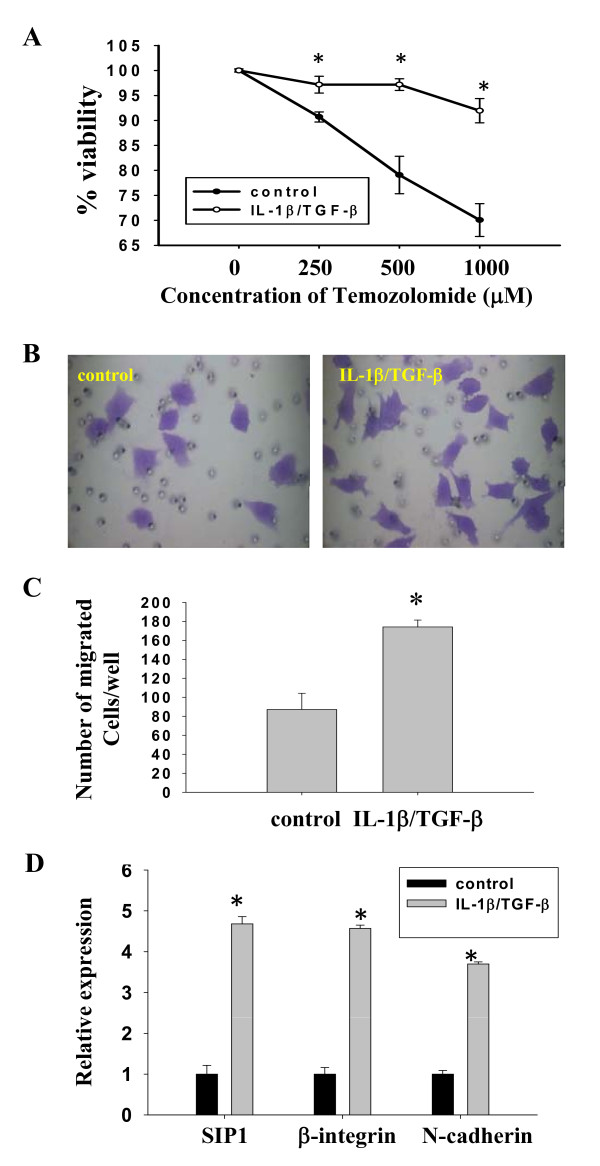Figure 3.
IL-1β/TGF-β-induced neurosphere cells show enhanced drug resistance and invasiveness. (A) IL-1β/TGF-β-induced neurosphere cells develop drug resistance. The control and IL-1β/TGF-β-induced neurosphere cells were treated with various concentrations of temozolomide for two days. Then, cells were dissociated and stained with Trypan blue, and counted under a microscope. The viability was determined by the percentage of live cells over the sum of live and dead cells. *P < 0.01. (B, C, D) IL-1β/TGF-β-induced neurosphere cells have stronger invasiveness and enhanced invasive gene expression. LN-229 cells were cultured in SFM in the absence or presence of IL-1β/TGF-β for seven days and then the control monolayer cells and IL-1β/TGF-β-induced neurosphere cells were dissociated. 5 × 104 cells of each group were placed on the top well of a Matrigel Invasion chamber. DMEM medium with 20% FBS was added to the lower chamber. After 48 h of incubation, non-invaded cells were removed from the top chamber and invaded cells at the lower surface were fixed and stained with 0.005% crystal violet. Representative images of migrated cells were shown in (B). Migrated cells/well were counted under a microscope and reported in (C). *P < 0.01. (D) Transcription levels of invasive genes in control monolayer and IL-1β/TGF-β-induced neurosphere cells. LN-229 cells were cultured in SFM in the absence or presence of IL-1β/TGF-β for seven days and relative gene expression was determined by qRT-PCR analysis. β-actin was used as an internal normalization control. Error bars represent SEM. *P < 0.005.

